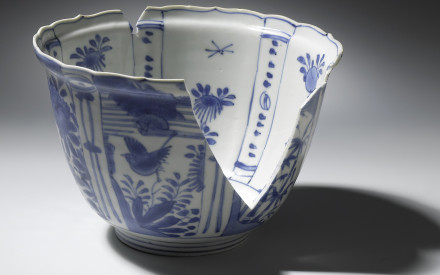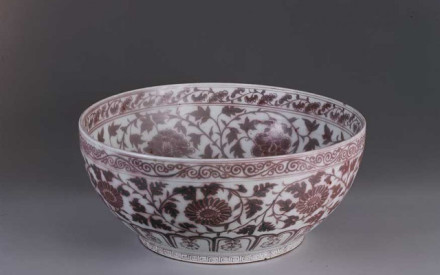The National Museum of World Cultures (NMVW) was created in 2014 from a merger of the National Museum of Ethnology (Leiden), the Tropenmuseum (Amsterdam), and the Africa Museum (Berg & Dal). Since 2017, the NMVW has been working closely with the Wereldmuseum in Rotterdam (WMR). Besides the collections, these four museums share a common mission: to inspire an open view of the world and contribute to global citizenship.
The joint Asian ceramics collection consists of over 8,000 objects, most of which are from Insular Southeast Asia (c. 2,500 pieces), followed by China (c. 1,700 pieces), Japan (c. 1,600 pieces), South Asia and Mainland Southeast Asia (c. 1,500 pieces), and Southwest and Central Asia (c. 1,000 pieces). The Vietnamese (c. 100 pieces) and Korean (c. 40 pieces) collections are smaller but no less interesting.
The lion’s share of the Asian ceramics is kept at the National Museum of Ethnology (fig. 1). Founded in 1837 as ’s Rijks Japansch Museum Von Siebold, this museum is one of the oldest ethnographic museums in the world. The original collection consisted of objects accumulated by Philipp Franz von Siebold (1796–1866) while working as a doctor at the Dutch trading post Deshima near Nagasaki in Japan between 1823 and 1830. The Siebold Collection includes some 200 Japanese ceramic objects, including many Hirado porcelains (fig. 2).
Besides Von Siebold, the genesis of the National Museum of Ethnology is also linked to King William I (1772–1843), who encouraged the founding of national institutions to promote science and art. Moreover, he commissioned scholars to collect objects in China, Indonesia and Japan. These objects were housed in the Royal Cabinet of Rarities, established in 1816 following the donation of the (predominantly Chinese) collection of Jean Theodore Royer (1737–1807). When the Royal Cabinet was disbanded in 1883, much of the collection was relocated to the museum in Leiden, which had already been renamed ’s Rijks Ethnographisch Museum in 1864. Although the bulk of Asian ceramics from the Royal Cabinet went to the Rijksmuseum in Amsterdam, over 100 objects (mostly Japanese) from this early collection are still preserved at the NMVW (fig. 3).
The Tropenmuseum in Amsterdam (fig. 4) opened in 1926 as one of the divisions of the larger Koloniaal Instituut (Colonial Institute), which had two main goals: collecting, and disseminating knowledge about the overseas regions (colonial propaganda) and overseeing all affairs relating to colonial possessions, in both the Netherlands and the colonies. The collection was based on objects sourced from the Koloniaal Museum (Colonial Museum) in Haarlem, founded in 1871. The bulk of the Asian ceramics in the Tropenmuseum were collected in Indonesia. The collection of Friedrich Wilhem Stammeshaus (1881–1957) is of particular note: he assembled it in Aceh while serving there as a non-commissioned officer in the Royal Netherlands East Indies Army (Koninklijk Nederlands Indisch Leger, KNIL) and governor, and later as curator of the Aceh Museum. In the 1930s, he sold and donated much of his collection to the Colonial Institute, where he became curator. The 70-plus ceramic objects from his collection include Zhangzhou and Japanese porcelains (fig 5).
The Wereldmuseum in Rotterdam (fig. 6) grew out of the former Koninklijke Yachtclub (Royal Yacht Club) chaired by Prince Henry (1820–1879), son of King William II (1792–1849). Yacht Club members donated nautical and ethnographic objects to the society, and the Prince Hendrik Maritime Museum was established in 1873 to house them. After Prince Henry’s death, the building became the property of the municipality, which decided to establish an ethnographic museum there, as had been done previously in Leiden and Haarlem. The Museum voor Land- en Volkenkunde, today's Wereldmuseum, opened on 1 May 1885. The Rotterdam museum has about 700 Asian ceramic objects in its collection, including an interesting sub-collection of nineteenth-century Iranian tiles and tableware (fig. 7).
The National Museum of World Cultures and the Wereldmuseum continue to purchase Asian ceramics for their collections, focusing mainly on contemporary objects (fig. 8) that shed a contemporary light on the historical collections. To visit the website click here.
Literature
Paul van Dongen, Playthings in Porcelain. Siamese Pee in The National Museum Of Ethnology, https://chinesemoneymatters.files.wordpress.com/2018/02/paul-van-dongen_-porcelain-money.pdf
David van Duuren, , 125 jaar verzamelen: Tropenmuseum Amsterdam. Amsterdam: KIT, 1990.
Rudolph Effert, Royal Cabinets and Auxiliary Branches: Origins of the National Museum of Ethnology, 1816–1883. Leiden: CNWS, 2008.
John Klein Nagelvoort, Toean Stammeshaus: leven en werken in koloniaal Atjeh. Volendam: LM Publishers, 2019.
Also see:
https://www.tropenmuseum.nl/nl/themas/geschiedenis-tropenmuseum
https://www.wereldmuseum.nl/nl/themas/geschiedenis-wereldmuseum
https://www.volkenkunde.nl/nl/themas/geschiedenis-museum-volkenkunde


